The China-EU Agreement on Geographical Indications officially entered into force on March 1, 2021. It is China's first bilateral comprehensive and high-level agreement on the protection of geographical indications (GIs), and an important and practical outcome in the development of China-EU economic and trade relations in recent years.
We will continue to introduce to you the first batch of 100 Chinese GIs and 100 European GIs under the Agreement, to better protect and market them to meet the needs of consumers on both sides for a better life.
GI Episode 28: Fujian Tea (3)
Fuzhou Jasmine Tea
Fuzhou, located off the southeast coast of China, is an estuary basin surrounded by mountains, featuring a warm climate, abundant precipitation, and high diurnal temperature amplitude, which offer suitable conditions for the growth of jasmines, and microclimates for tea growth. The unique basin landform, superior wetland ecology of the Minjiang estuary sandbanks, special land and climate as well as soil characteristics of the local areas have nourished jasmine tea with superior quality.
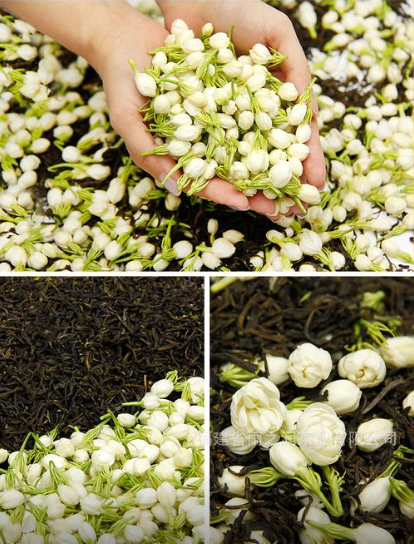
Jasmine, originated from the Persian Gulf, was introduced to China from India over two thousand years ago. Fuzhou, which boasts a long history of jasmine plantation, ranks top in China in terms of quantity and quality of this plant. Fuzhou is also the only Chinese city that honors jasmine as its city flower. The production of jasmine tea in Fuzhou, dating back to the Northern Song Dynasty (960-1127), has a history of more than 1000 years. The scenting technique of jasmine tea in Fuzhou gradually matured in the Ming Dynasty (1368-1644) and culminated in the Qing Dynasty (1644-1912). Since the founding of the People’s Republic of China in 1949, jasmine tea from Fuzhou Tea Factory has been presented as a gift tea on diplomatic occasions.
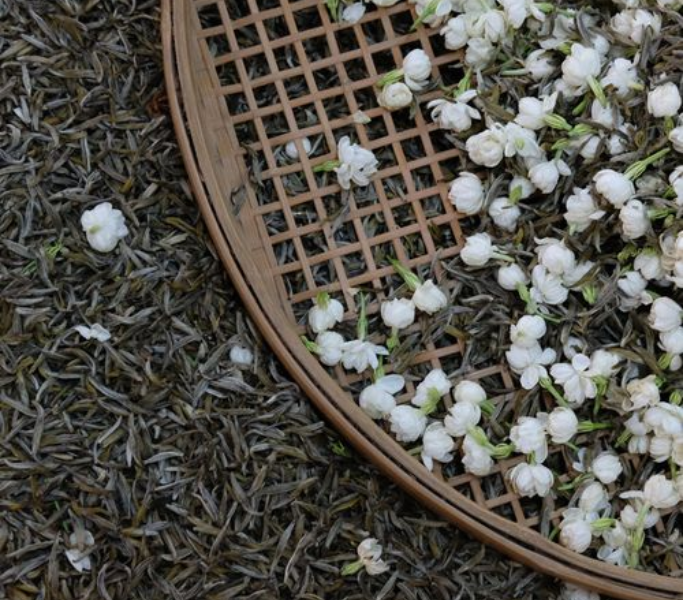
Fuzhou jasmine features a unique fragrance. It is mainly planted on alluvial sandbanks on both sides of Minjiang River, where the soil is sandy. Additionally, the superior water quality of the Minjiang River renders a special fragrance to the jasmine flowers. Single-petal jasmine, which is specific to Fuzhou, stands out as the most fragrant variety, creating the uniquely fresh, mellow and lasting aroma, and developing a unique flavor known as“rock sugar flavor”.
Fuzhou jasmine tea scenting is celebrated as a unique technique, of which a prominent characteristic is “visible tea with invisible flowers”. Seven complicated scenting processes, namely even sieving, shaking, stepping, poking, baking, scenting, and enhancing, are required to achieve the effect that “tea absorbs flower aroma, and flowers enhances tea flavor”. The best Fuzhou jasmine tea requires nine times of scenting, with 81 repetitions of the process, strict control of the temperature and humidity of scenting, the timing of flower sobering, moisture and so on. The least bit of difference would lead to a great lapse in quality.
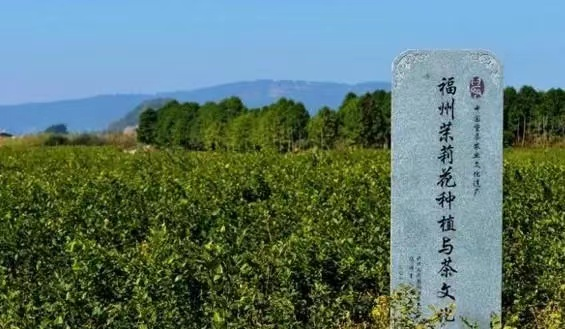
In 2011, the International Tea Committee awarded Fuzhou the title of “Home of Jasmine Tea”, and in 2012 the title of “World Famous Tea”. In May 2013, the Fuzhou Jasmine Planting and Tea Culture System was listed into the first list of important agricultural cultural heritages in China by the Ministry of Agriculture. On April 29, 2014, Fuzhou Jasmine and Tea Culture System was listed as an important global agricultural cultural heritage by the Food and Agriculture Organization of the United Nations (FAO). In the same year, the scenting process of jasmine tea in Fuzhou was entered into the fourth list of representative national intangible cultural heritages by the Ministry of Culture in China.
Fuding White Tea

Fuding in the northeast of Fujian Province is located off the coast of the East China Sea at the border between Fujian and Zhejiang. Fuding boasts a long history of tea production, with a thousand-year-old legend of treating children’s measles with white tea. Lu Yu of the Tang Dynasty writes in The Tea Classic, “There is a white tea mountain 300 miles to Yongjia County.” According to expert research, the White Tea Mountain refers to Taimu Mountain in Fuding, Fujian. Fuding, known as the birthplace of white tea in China, is the largest white tea producing area and export base, with such a high reputation that people say that “world class white tea is found in China, and best white tea in China is from Fuding.”
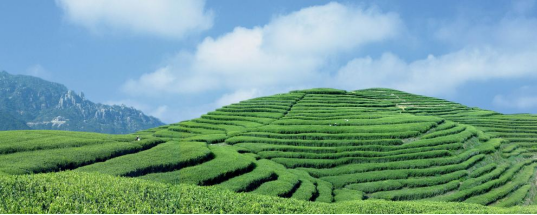
Fuding White Tea, as a special kind of white tea, is a micro-fermented tea. It is so named because its finished product features fat buds covered with white hairs, white as silver and snow. Based on the difference of raw fresh leaves and the difference of production techniques, Fuding White Tea falls into several categories, such as Baihao Yinzhen (white hairs and silvery needles), Bai Mudan (white peonies), Gongmei (tribute eyebrows), Shoumei (longevity eyebrows), and white tea produced with new techniques. Fuding White Tea is highly recognized for its uniqueness, superior quality, natural processes, unparalleled effect and collectivity. The raw materials of white tea are high-quality sprouts of the first batch of national premium tea trees, Fuding White Tea including “Huacha No.1” (Fuding Great White Tea) and “Huacha No. 2” (Fuding Great Hairy Tea). The tea is processed through two procedures, withering and drying, excluding any action that might destroy the activity of enzymes such as kneading or stir-frying. As a result, the nutritional ingredients in tea are preserved to the greatest extent. Thus the most pristine and natural green tea beverage comes into being, with bright apricot color, and refreshingly sweet flavor.

There is a long history of foreign trade in Fuding White Tea, of which export started as early as 1891, and peaked in 1912-1916. In the 1980s, the tea market was opened up to the world. The main sales channel of Fuding White Tea returned to foreign trade, and this variety became the main category of exported tea from China. By far, the white tea industry in Fuding has become a leading industry of rural revitalization, and plantation-based ecological management and information traceability systems have been developed, so that the origin and quality of tea can be traced from tea plantations to teacups. In January 2010, Fuding White Tea won the honor of “China Famous Trademark”. In May 2011, Fuding White Tea processing was officially listed in the national intangible cultural heritage list. In June 2017, the Fuding White Tea Culture System was selected into the fourth batch of China’s important agricultural cultural heritages by the Ministry of Agriculture. In November 2020, Fuding White Tea was selected into the EU-China Landmark Geographical Indications Agreement, and became a major tea product exported to the EU.

Tanyang Kung Fu Tea
Fu'an in the northeast of Fujian, surrounded by mountains and the sea, featuring picturesque landscape and boasting the Baiyun Mountain Scenic Spot of the Ningde World Geopark, houses the largest settlement of the She ethnic minority in China, and is known as the birthplace of Tanyang Kung Fu Tea, place of origin of Chinese Kung Fu Black Tea, home of Chinese tea and center of black tea.
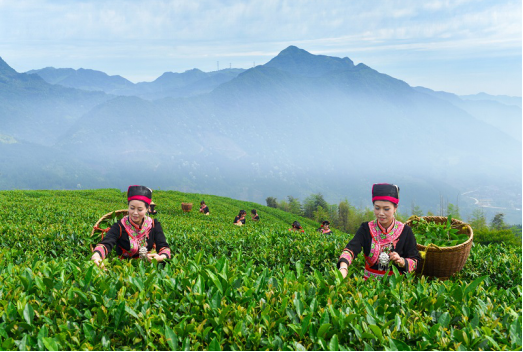
Fu'an has a long history of tea planting, making and producing, which can be traced back to the Sui Dynasty more than 1400 years ago. In the Tang Dynasty, people in every household drank tea, and tea competitions were frequently held in the Song Dynasty. In the fourth year of the Mingwu era (1371) of Ming, tea farmers in Fu’an discovered and utilized the local tea variety “Tanyangcai Tea”, which was distinguished by its wide adaptability and strong stress resistance. China has a long history of foreign trade in tea. In the first year of the Xianfeng era of Qing (1851), “Tanyang Kung Fu Tea” was successfully developed with “Tanyangcai Tea” as raw material, which became a main category of exported tea and was sold to Western Europe. Saiqi Port in Fu’an thus also became one of the world’s major “tea ports” then and the starting place of the “Maritime Sea Tea Road”. With surging demand for Chinese black tea surged in the international market from 1851 to 1875, Tanyang Kung Fu Tea rose to become one of the world famous teas, and in 1915 it won a gold medal from the Panama International Exposition.
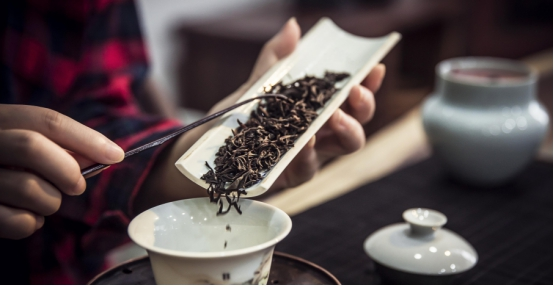
Tanyang Kung Fu, a kind of black tea, is a fully fermented tea. It takes a lot of effort and time to process Tanyang Kung Fu Tea, with more than ten processes such as withering, twisting, fermentation and refining. Thanks to the great efforts, the finished tea product looks compact and even, with a shiny black color. The tea soup is bright and red, with a lofty and transcendental aroma, refreshing and full-bodied flavor, and soft, tender, red and resplendent leaf base.

Today, the tea industry has become a livelihood industry in Fu’an. In 2007, Tanyang Kung Fu Black Tea was listed as a product under protection as a National Geographical Indication. In 2008, it won the National Geographical Indication Certification Trademark. In 2015, it became the only designated tea for the China Pavilion in the Milan World Expo. In 2016, it stood out as the first tea brand promoted at the Fujian Provincial People's Government’ tourist promotion conference held in New York, “A Cup of Tea, a House and a Road”. In 2021, the processing of Tanyang Kung Fu Black Tea was listed in the fifth batch of national intangible cultural heritages in China, and the brand value of Tanyang Kung Fu Tea amounted to 4.641 billion yuan, ranking top among all black tea brands in China.
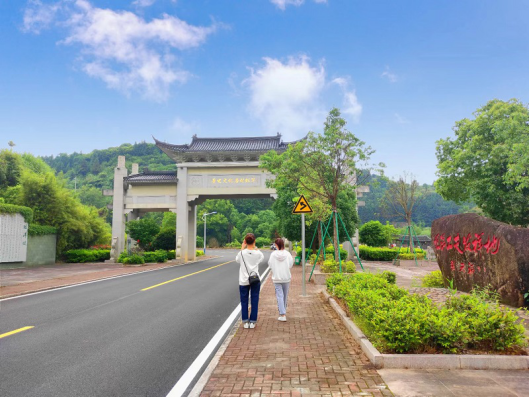
In recent years, Fu’an has won a series of honors, including “Hometown of Chinese Tea”, “National Green Food (Tea) Raw Material Standardized Production Base City”, “Regional Premier Variety (Tea Tree) Breeding Base City”, “National Tea Standardized Production Demonstration City”, and “National Top Ten Counties of Ecological Tea-Production”. While carrying on the fine tradition, Fu’an also endeavors to make innovations. On the basis of the traditional Tanyang Kung Fu Tea processing techniques, the first “Flower and Fruit Fragrance” black tea in China has been successfully created, initiating another consumption boom of black tea and injecting new vitality into the industry.
